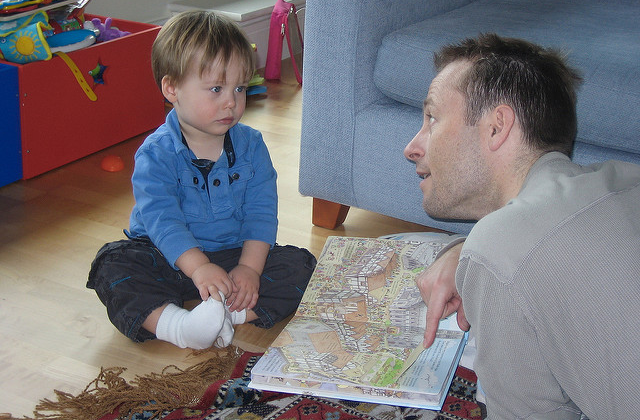Rationale: Children need lots of practice to learn a new skill, including how to use nonverbal communication to express their needs, desires, and thoughts. To help your child learn how powerful communication can be, you will need to provide frequent communication opportunities.
You can create these opportunities during object or social play, throughout mealtime and caregiving, and during book activities or even household chores. For example, you can give and request objects from your child during diapering or dressing, or you can blow bubbles, swing, or tickle your child a couple times, then stop the activity and wait for your child’s communication cue to continue.
To reinforce the power of communicating, be sure to respond immediately to your child’s nonverbal communication and narrate aloud what your child expressed. For example, when your child uses a nonverbal communication to indicate a food choice, you can respond by saying, “You want [food]” as you give it to her. Promptly add, “Here is [food].” Initially, you should respond to even the most subtle communication cues so your child learns that communication will get her what she wants.
The links below provide handouts outlining the steps for teaching your child to wave, “high five,” request an object or your help, and to indicate “no” or refusal. These four gestures are important ways your child can learn to communicate nonverbally and provide a foundation for social communication. Click these links to download these handouts. Learning Gestures (PDF) (MSWord)

Read more:
Gestures and signs for communicating
I know I am providing opportunities for my child to communicate when I:
- Create situations in which my child will need to communicate for help many times each day
- Offer two choices for a toy, food, books, etc., and wait for a communication attempt
- Plan fun activities that require my child to ask for “more”
- Offer small amounts of food at snack or mealtime so my child needs to request more.
Back to Module 3 Step 4: Persist

